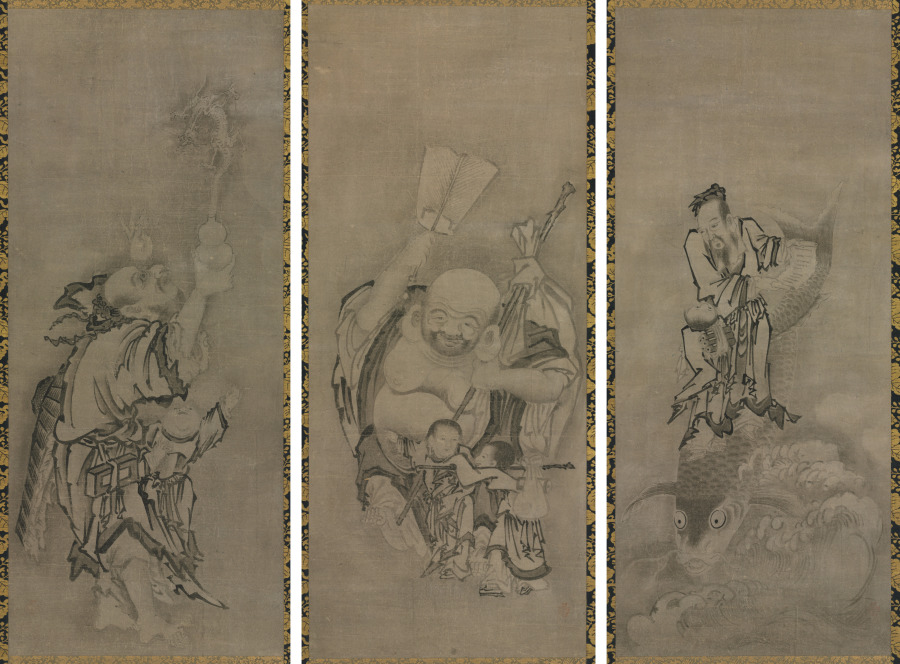| schema:description 9 | "collection: ASIAN - Hanging scroll" |
| schema:description | "technique: triptych of hanging scrolls: ink on paper" |
| schema:description | "tombstone: Hotei with Daoist Immortals, late 1600s–early 1700s. Kyūseki Tomonobu (Japanese, 1653–1721). Triptych of hanging scrolls: ink on paper; overall: 210.2 x 68.6 cm (82 3/4 x 27 in.). The Cleveland Museum of Art, Mr. and Mrs. William H. Marlatt Fund 1989.8...(more)" |
| schema:description | "measurements: Overall: 210.2 x 68.6 cm (82 3/4 x 27 in.)" |
| schema:description | "culture: Japan, Edo period (1615-1868)" |
| schema:description | "id: 155064" |
| schema:description | "type: Painting" |
| schema:description | "digital_description: Hotei was a Chan (Zen) monk living in China during the 900s who became a legendary figure in Japan in the 1300s. At that time a popular cult praising him sprang up, extending beyond Zen to other religious communities. This rare triptych embraces a central Zen icon with flanking Daoist images, thereby suggesting the compatibility, rather than the exclusivity, of these two creeds. Hotei also enjoys popularity in Japan as a kind of folk figure, which explains his mirthful expression in Japanese paintings. The Daoist figures in contrast appear eccentric and foreign, in keeping with Daoist lore. When these paintings came to the museum their appearance was compromised by poor quality textile mountings, and cracked paper surfaces needing restoration. Following the cleaning of the paper surfaces and the repair of the lifting surface areas, each scroll was completely remounted. No inpainting was done, thereby preserving the original ink values and brushstrokes....(more)" |
| schema:description | "creditline: Mr. and Mrs. William H. Marlatt Fund" |

